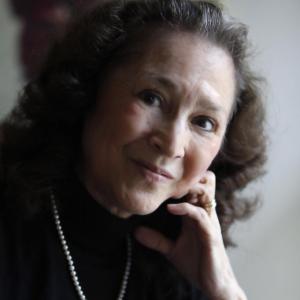When Professor Lisa Taylor brought the Worlds of Journalism Study (WJS) to life at a media ethics conference in Doha, Qatar, in January, many in the room were hearing about the groundbreaking project for the first time.
Between 2012 and 2016, researchers surveyed 27,500 journalists from 67 countries, including Russia, China and Turkey, where media workers are under attack. The “unprecedented collaborative effort,” which set out to assess the state of journalism on a global scale, reached from tiny Kosovo and Bhutan to major international hubs, including Italy, Australia, India, Canada and the United States.
The report offers a glimpse into the hearts and minds of media practitioners, and provides fodder for comparative studies in an era of profound changes in the news industry.
“The report provides insight [into the journalism world] we otherwise would not have,” said Taylor, who is Canada’s WJS team leader, and head of the undergraduate journalism program at Toronto’s Ryerson University. “This is the only quantitative picture we have of who Canadian journalists are, both in terms of demographics and employment, but also what they see as their role.”
Each country report paints a vivid picture of what journalists see as their ethical lodestars - for example, whether they feel most committed to ethics codes versus personal judgement, and what reporting tactics are, and are not, accepted practice, Taylor explained.
A section labeled, “Key findings at a glance,” highlights results from a master questionnaire for news managers and practitioners. WJS chair Thomas Hanitzsch described the results as “a snapshot of how much freedom journalists think they have around the world and of the factors that influence their work.”
“Journalism can take very different forms depending on the political, socio-economic and cultural context within which journalists work,” said Hanitzsch, who also heads the department of media and communication at Ludwig-Maximilians University in Munich, Germany.
While Western journalists may view a free press as an independent and objective entity that holds the powerful accountable, “such a view is not necessarily shared by journalists in other parts of the world,” Hanitzsch noted. “Understanding of journalism often is locally grounded and bound to specific contextualities.”
However, there were some commonalities among survey respondents. For example, there tended to be agreement on the following concepts:
-
Despite dramatic changes and transformations in the profession, key elements of journalistic ideology, including ethical standards, remain intact.
-
Technological environment - notably social media and user participation - marked the most significant source of change.
-
Main newsgathering mission was widely viewed as informing the public, monitoring those in power and holding them accountable.
-
Journalists showed little trust in politicians and political parties. [Russian journalists indicated they trusted the military more than state officials.]
-
Many felt they were being asked to do more with less, affecting the quality of news they produced.
The findings invite comparisons of who journalists are, and how they operate.
In Russia, for instance, the typical journalist is female (women comprised 64 percent of interviewees), in her mid-30s and holds a university degree in journalism communication. The study found that Russian journalists placed little importance on supporting government policies and conveying positive images of political leadership. Decrease in the media’s public credibility was a major concern.
Meanwhile, the typical American journalist is a white, college-educated, 47-year-old male who majored in a university journalism program. Just 27 percent of those interviewed were women, even though women make up a majority of today’s journalism majors. Like their Russian counterparts, supporting government policy and political leaders was not high on the list. Interviewees viewed social media, such as Facebook and Twitter, as the biggest agent of change in journalism.
In China, it was an even split; the typical journalist can be either sex, in their early-30s and with a university degree in journalism. A majority of journalists interviewed in China felt it was important to “influence public opinion and to support government policy.”
WJS piloted its first project covering seven countries in 2006. In early 2011, they sent out a second wave of surveys, at which point the moniker, Worlds of Journalism Study, became a trademark.
As the network expanded, regional coordinators and an executive committee directed the international undertaking. The second study’s findings are scheduled to be published in May, 2019.
As for the future, a third set of surveys - WJS3 - is in the works with the theme, “Journalism Facing Risk and Uncertainty.” Journalists’ safety, competition with social and “alternative” media, massive efforts to manipulate public opinion, and the growing trend toward short-term, contract-based, freelance work with low pay are among topics that will be explored.
Sherry Ricchiardi was at the Doha conference and attended Lisa Taylor’s WJS presentation.
Main image CC-licensed by Unsplash via Kyle Glenn.


